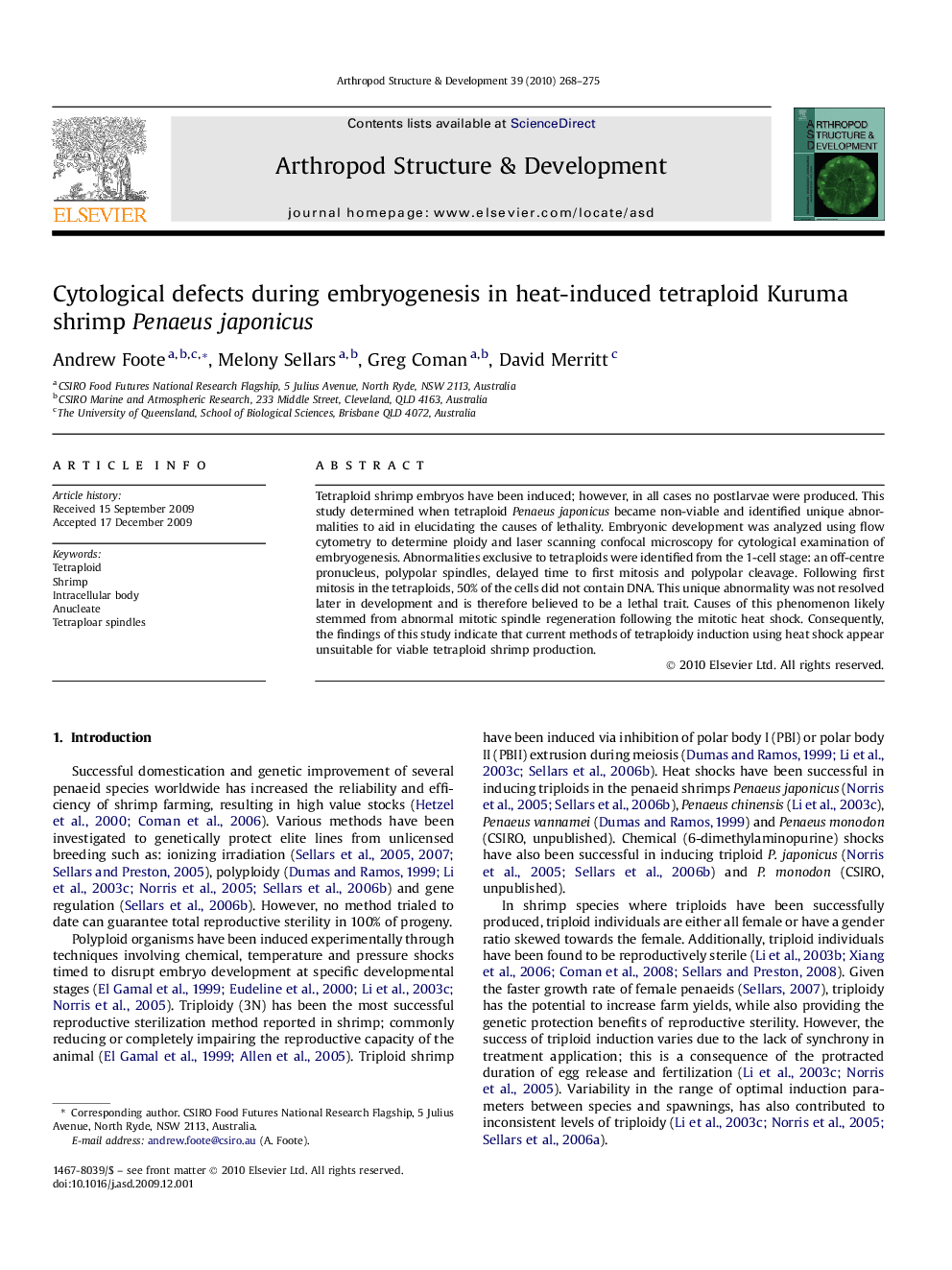| Article ID | Journal | Published Year | Pages | File Type |
|---|---|---|---|---|
| 2778914 | Arthropod Structure & Development | 2010 | 8 Pages |
Tetraploid shrimp embryos have been induced; however, in all cases no postlarvae were produced. This study determined when tetraploid Penaeus japonicus became non-viable and identified unique abnormalities to aid in elucidating the causes of lethality. Embryonic development was analyzed using flow cytometry to determine ploidy and laser scanning confocal microscopy for cytological examination of embryogenesis. Abnormalities exclusive to tetraploids were identified from the 1-cell stage: an off-centre pronucleus, polypolar spindles, delayed time to first mitosis and polypolar cleavage. Following first mitosis in the tetraploids, 50% of the cells did not contain DNA. This unique abnormality was not resolved later in development and is therefore believed to be a lethal trait. Causes of this phenomenon likely stemmed from abnormal mitotic spindle regeneration following the mitotic heat shock. Consequently, the findings of this study indicate that current methods of tetraploidy induction using heat shock appear unsuitable for viable tetraploid shrimp production.
